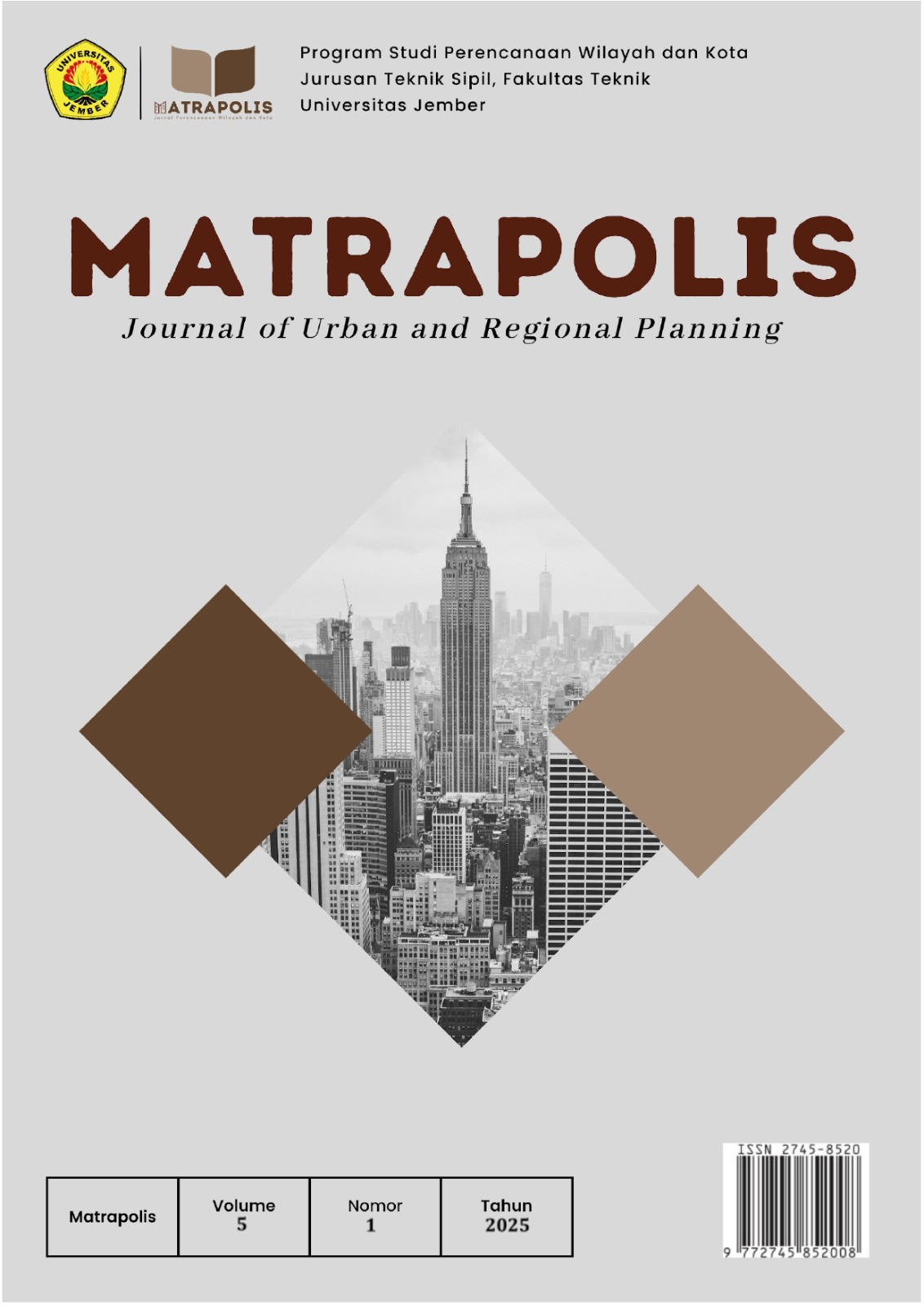Strategic Approach to the Development of Cultural Tourism Potential in Penataran Village, Blitar Regency
Pendekatan Strategis terhadap Pengembangan Potensi Wisata Budaya Desa Penataran, Kabupaten Blitar
Keywords:
Pariwisata, Wisata Budaya, Desa PenataranAbstract
Tourism activities have become an essential need for modern society living amidst the hustle and bustle of daily life. In Indonesia, the tourism sector has been designated as one of the national development priority programs. Priyanto (2016) stated that tourism has now become a growing trend within society. This trend shift is marked by a transition from conventional tourism to special interest tourism, such as culture-based tourism villages. One example is Penataran Village, which, according to Article 45 of Regional Regulation (PERDA) No. 5 of 2013 on the Spatial Plan (RTRW) of Blitar Regency, is designated as a cultural and scientific tourism area. However, Ardian (2018) highlighted that the quality of tourism development in Blitar Regency remains suboptimal. The issues include a lack of supporting infrastructure, low human resource capacity in the tourism sector, limited facilities, weak community awareness of the importance of tourism, and inadequate promotion efforts. These factors have led to stagnation in the development of several tourist destinations. This is also reflected in the Strategic Plan (RENSTRA) of the Blitar Regency Office of Tourism, Culture, Youth, and Sports for the years 2016–2021, which states that efforts in cultural preservation and development have yet to be fully optimized.
This research is intended to identify the components and characteristics of cultural tourism in Penataran Village, as well as to formulate development strategies suited to the existing conditions. A qualitative data analysis approach is used to identify tourism characteristics, while the SWOT analysis method is applied to formulate development strategies. The research findings resulted in four key strategies: (1) Utilizing tourism potential through government-initiated programs to attract visitors; (2) Providing accommodation areas and souvenir centers near the tourist site to enhance the local economy; (3) Supervising and maintaining existing facilities; and (4) Positioning Penataran’s cultural tourism area as an educational destination offering historical and cultural values.
Downloads
References
Anwar Sanusi. 2017. Business Research Methodology. Jakarta: Salemba Empat, Seventh Printing.
Fahmi, I. (2013). Manajemen Strategis Teori dan Aplikasi. Bandung: Alfabeta.
Rangkuti, Freddy. 2006. Analisis SWOT Teknik Membedah Kasus Bisnis. Jakarta: PT. Ikrar Mandiriabadi
Sugiyono. (2010). Metode Penelitian Kuantitatif Kualitatif dan R&D. Bandung: Alfabeta.
Kriyantono, Rachmat. 2007. Teknik Praktis, Riset Komunikasi.Kencana Prenada Media Group.Jakarta.
Nisak, K. (2013). Analisis Strategi Pengembangan Objek Wisata Menggunakan Matriks SWOT (Studi pada Wisata Bahari Lamongan). Jurnal Administrasi Bisnis, 2(1), 1–8.
Priyanto, P. 2016. Pengembangan Potensi Desa Wisata Berbasis Budaya Tinjauan Terhadap Desa Wisata Di Jawa Tengah. Jurnal Vokasi Indonesia, 4(1)
Setiawan, A. W. (2018). STRATEGI DINAS PARIWISATA KABUPATEN BLITAR DALAM PENGEMBANGAN KEPARIWISATAAN GUNA MENDUKUNG PENINGKATAN PENDAPATAN ASLI DAERAH (Doctoral dissertation, Universitas Brawijaya)
Peraturan Daerah Kabupaten Blitar Nomor 5 Tahun 2013. Rencana Tata Ruang Wilayah Kabupaten Blitar Tahun 2011 – 2031. 26 September 2013. Blitar.
Disparbudpora Kabupaten Blitar. (2016). Rencana Strategis (Renstra) Dinas Pariwisata, Kebudayaan, Pemuda dan Olahraga Kabupaten Blitar Tahun 2016–2021. Blitar: Pemerintah Kabupaten Blitar.




1.png)
2.png)




